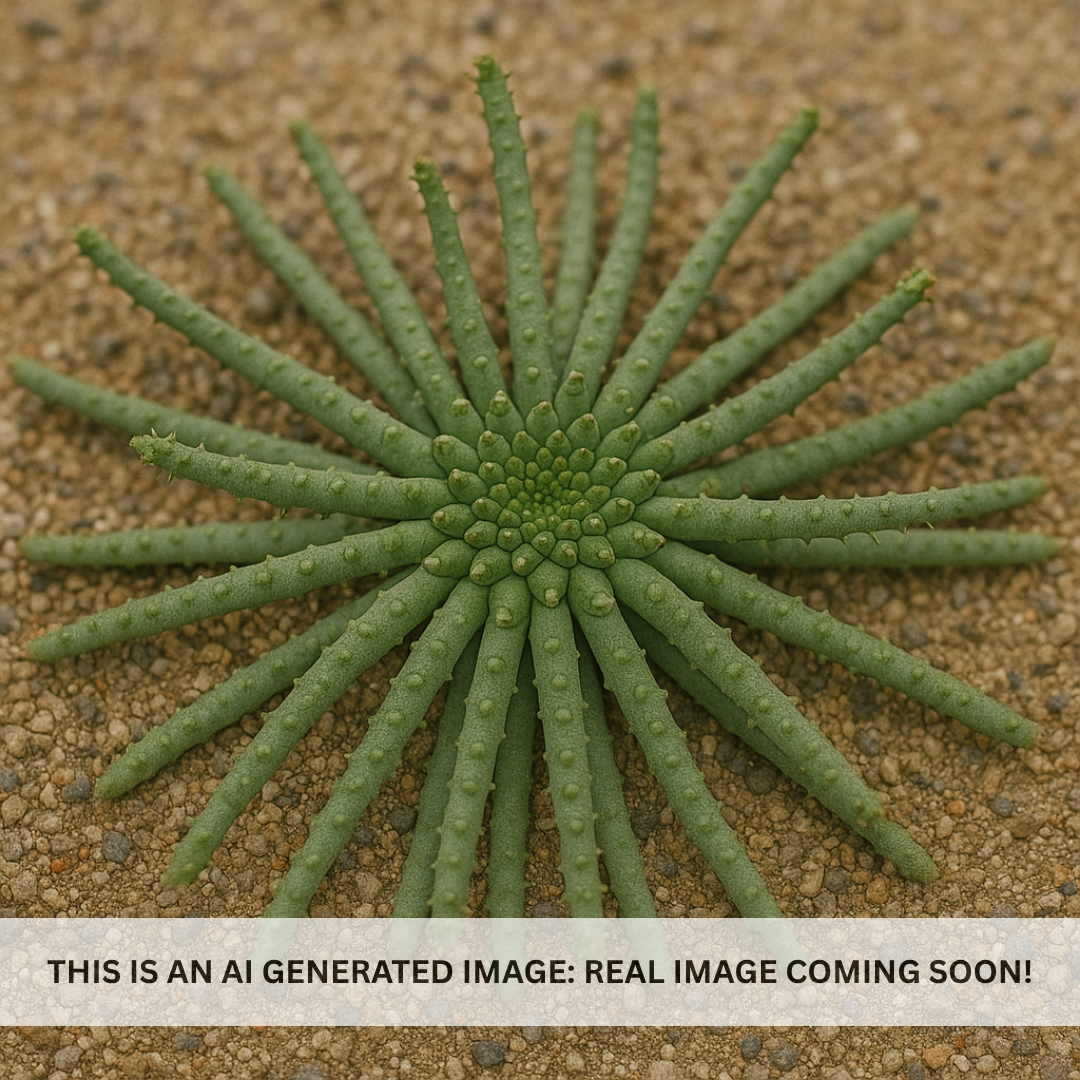My Store
Medusa's Head
Medusa's Head
Couldn't load pickup availability
Plant Type: perennial, succulent
Plant Height: 4–6 inches (spreading up to 12 inches wide)
Spread: 10–12 inches
Flower Color: yellow-green
Sun Exposure: Full sun, Partial Shade
Medusa’s Head / Euphorbia flanaganii: A Whimsical, Sprawling Succulent for Creative Desert Designs
Euphorbia flanaganii, commonly known as Medusa’s Head, is one of the most distinctive and imaginative succulents in the Euphorbia family. Its unusual form features a central, knobby “head” from which dozens of slender, serpent-like arms radiate outward, creating a hypnotic pattern reminiscent of the mythological creature it’s named after. Native to South Africa, this low-growing species thrives in Arizona’s warm, arid climate and adds a sculptural, conversation-worthy touch to any rock garden, container, or artistic landscape display.
Key Features of Euphorbia flanaganii
Medusa’s Head forms a sprawling, circular mat of soft, green arms that radiate from a swollen, textured central caudex. Each “arm” is fleshy, slightly wavy, and often twists gently as it grows, contributing to its serpentine allure. In bright light, the plant may develop golden or bronze tones, adding color contrast and visual depth. During warmer months, clusters of small, yellow-green flowers (cyathia) emerge along the tops of the arms, adding cheerful accents. Like other euphorbias, it exudes a milky sap when damaged—handle carefully and avoid contact with skin or eyes.
Growing and Care Tips
Euphorbia flanaganii thrives in bright, indirect light or filtered sun, making it ideal for patios, planters, or partial-shade desert beds. It prefers sandy, well-draining soil and benefits from being slightly elevated in mounds or pots to prevent water accumulation. While it can tolerate full sun in Arizona, providing afternoon shade during peak summer months will help prevent scorching and preserve its rich green color. This species is highly drought-tolerant and should only be watered when the soil is completely dry. Cold-sensitive, it should be protected or brought indoors if temperatures fall below 35°F.
Landscaping Uses
Medusa’s Head is a natural choice for rock gardens, succulent bowls, and artistic desert arrangements. Its sprawling form contrasts beautifully with upright plants like Golden Barrel Cactus, Red Yucca, or African Candelabra, adding movement and texture to otherwise static designs. When used in containers, its radial symmetry creates a living sculpture that draws the eye from every angle. It’s also an excellent ground-level accent in low-water beds or along pathways, where its intricate form can be appreciated up close.
Summary
Euphorbia flanaganii is a living work of art—compact, mesmerizing, and surprisingly hardy. With its Medusa-like arms, radiant symmetry, and minimal water needs, this plant brings a touch of fantasy and structure to any Arizona landscape. Perfect for those seeking a distinctive, low-maintenance showpiece that thrives in the desert’s challenging conditions.
Three Timbers Installation Guide (Feel Free to Follow):
Euphorbia flanaganii Planting Guide:
Location: Full sun to partial shade; ideally positioned where it receives morning sun and afternoon shade in the Phoenix Valley to prevent leaf scorch.
Soil: Use a gritty, fast-draining mix—combine native soil with cactus mix and coarse sand or pumice for optimal aeration.
Spacing: Allow 12–15 inches between plants to accommodate the spreading, circular growth habit.
Planting Depth: Keep the central crown level with or slightly above the soil surface to avoid moisture buildup at the base.
Support: Not necessary; the plant’s radial shape naturally supports its structure as it grows outward.
Watering Guide:
Watering After Planting: Water thoroughly after planting to settle the soil and then allow it to dry out fully before the next watering. During establishment (first 2–3 months), water every 10–14 days depending on temperature and sunlight exposure.
When is the Plant Established? Euphorbia flanaganii is established after 6 months, once new arms appear from the central crown and growth becomes consistent.
Watering Once Established: Water every 3–5 weeks during the hot season and rarely, if ever, during winter dormancy. Overwatering can cause the central crown to rot.
Drip Irrigation Setup: Place one low-flow emitter (0.5–1 gallon per hour) about 6 inches from the plant’s center, angled outward to promote lateral root growth. Allow complete soil drying between irrigation cycles.
General Watering Tips: Always verify the soil is dry before watering again. Avoid water pooling at the crown. Apply a thin layer of rock mulch to conserve minimal surface moisture and control weeds, keeping the mulch a few inches away from the plant’s base to ensure ventilation and longevity.
Share














